Contrary to what the numbers may have you believe, the Smart #3 isn’t the bigger brother of the Smart #1. In fact, it’s roughly the same size but with a lower coupe-style roofline and a larger boot (thank the longer rear overhang for that), making the choice between the two largely an aesthetic choice.
And for my money, the #3 Premium you see before you makes that particular choice an easy one, simply on the strength of its fantastically retro-inspired 19-inch alloy wheels alone.
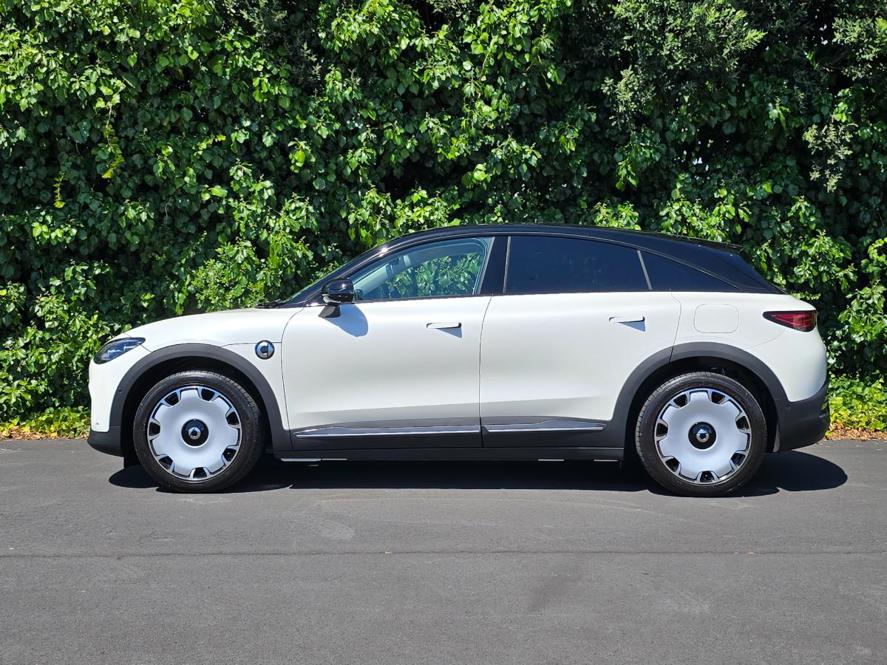
Our test car’s (optional) white and black two-tone finish combined with those alloys to make the #3 a rather striking retro-inspired looker, and one that got plenty of stares during our week with it.
Regardless of whether you prefer the #3’s curvier look or the #1’s more Mini-esque hatch look you get the same 66kWh battery and 200kW electric motor mounted on the rear axle and, in the case of the more slippery coupe-style #3, a WLTP-tested range of up to 455km.
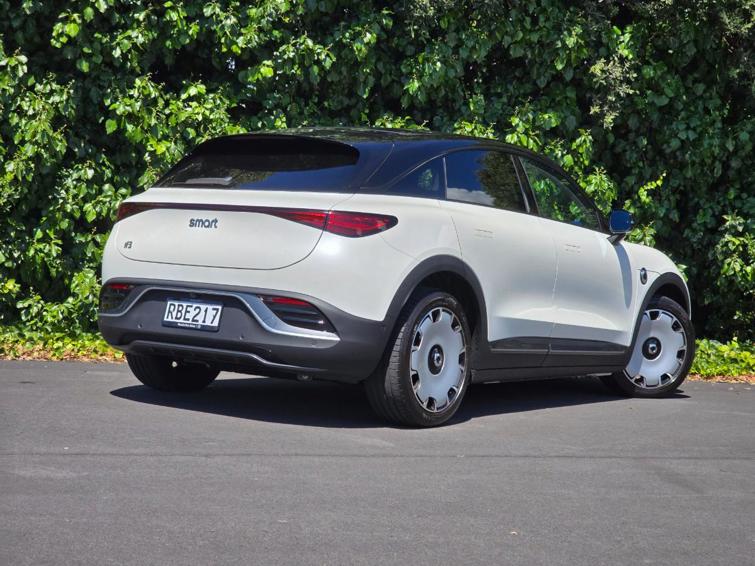
It will also scamper to 100km/h from a standstill in 5.8 seconds, which is more than quick enough for any well-adjusted human being (there is an AWD 315kW Brabus model that will do it in a frankly silly 3.7 seconds if you’re not), and for the $74,990 Smart asks for the #3 Premium you see here, you get a rather healthy list of standard kit, as well as all the expected safety and driver assists.
Speaking of driver assists, the spot-on level of assistance and warnings the #3 has makes it easily one of the best calibrated systems I have experienced so far – chimes are loud enough to hear, but not be annoying, while the level of intervention is suggestive rather than forceful. Just as it should be.
But it is the level of monitoring that is truly impressive – the times it audibly scolded me were well-deserved (staring off at something on the side of the road or spending too long faffing around with the audio system) and if you behave yourself and drive in a responsible manner you will barely hear a peep out of it.
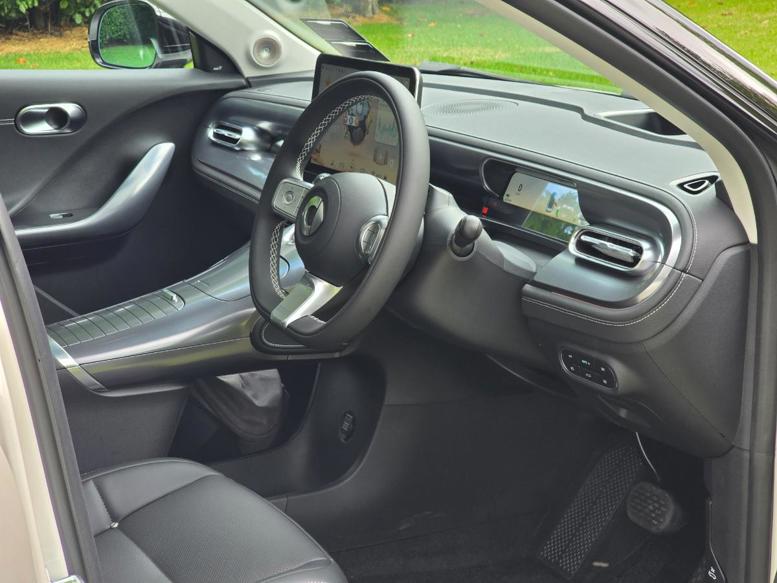
But even better is the fact that Smart has included a driver profile system that will store all your preferred settings for the assists (and other systems), that you can turn on by simply swiping down from the top of the central touchscreen and hitting an icon.
And best of all – it's rear drive! One of the most overlooked advantages of an EV for the enthusiastic driver is the resurgence of RWD, particularly in small cars like the #3.
Although the driver assists are so subtle that I often didn’t even bother, the fact that you can turn everything on or off with a swipe and a touch plays nicely into another of the #3’s strengths – it's delightfully eager nature on the open road.
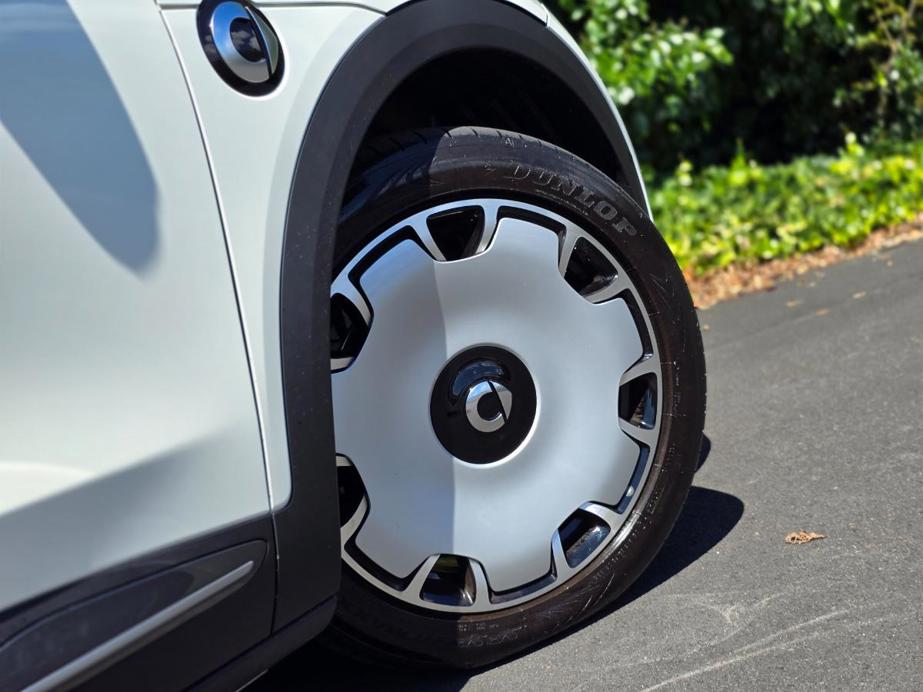
Switch things like lane assist off and drop it into Sport mode and the #3 is a wonderfully fun car to throw down a winding back road, with a sharp and responsive chassis and nicely weighted, direct steering.
Despite the fact it weighs 1800kg, the #3 feels lithe, agile and compact on the road, while the fact that the weight is all nice and low gives it a fantastically low centre of gravity.
And best of all – it's rear drive! One of the most overlooked advantages of an EV for the enthusiastic driver is the resurgence of RWD, particularly in small cars like the #3, and having 200kW pumping through the rear wheels and a lovely low centre of gravity makes the #3 a surprising amount of fun.
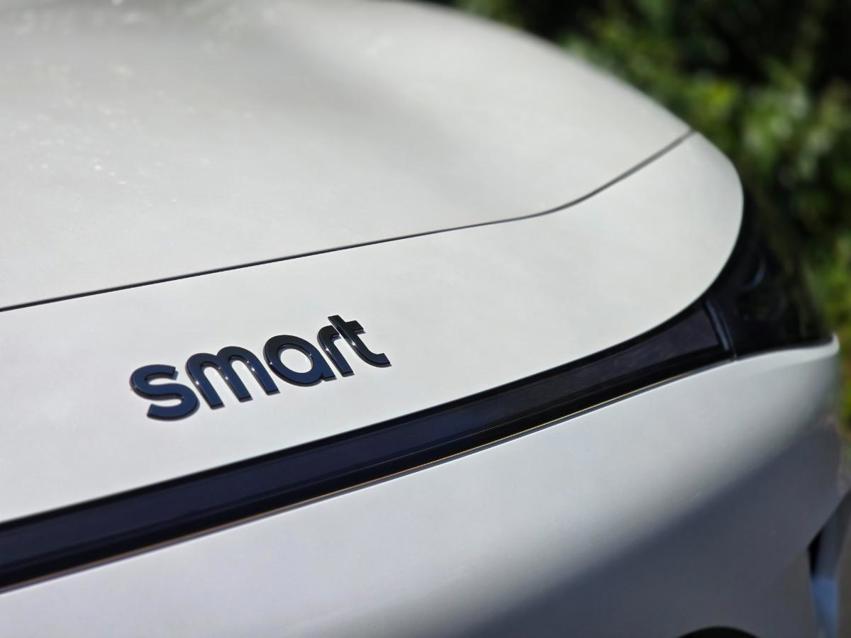
While its ride is on the sportier side it is still quite a soft set up, but body roll is particularly well controlled and what roll it does have only adds to its endearing attitude when punching it out of a corner.
There is one downside to the interior, however, and it depends on your attitude to sunroofs...
That said, the #3 is also impressively comfortable when you are not trying to peel the rear tyres off it, and while it can occasionally be slightly fussy over rough surfaces at low speeds, the high-speed ride is nicely compliant.
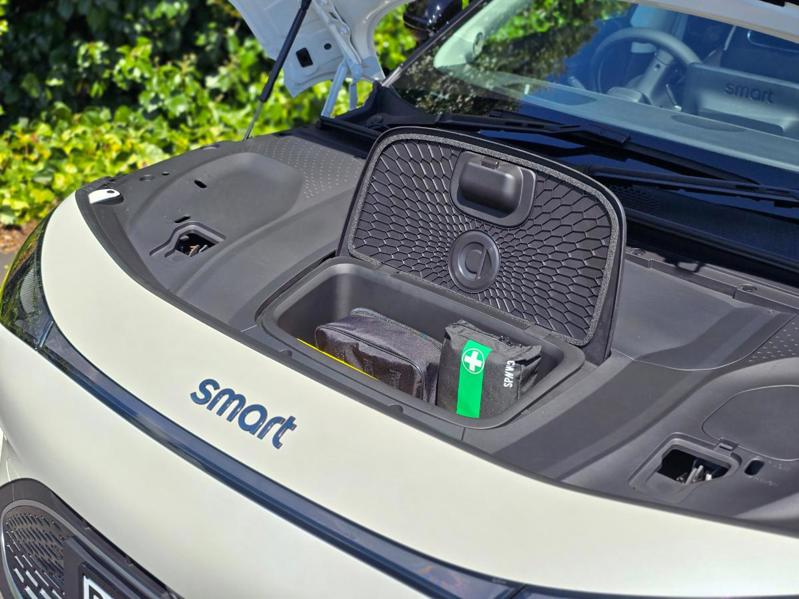
That comfort extends into the interior, with excellent seats and a sensible layout to the cabin. Everything falls to hand nicely and, once you have everything set up to your liking, the #3 is fantastically user-friendly.
There is one downside to the interior, however, and it depends on your attitude to sunroofs. Both the #1 and #3 have full-length panoramic sunroofs, and while the #1 has a retractable blind, the #3 misses out on that feature (presumably due to its lower, curvier roofline) letting the sun stream through constantly – some people may like this, but I am most definitely not one of them.
According to Smart’s local distributor there is a fix for this in the form of an optional clip in sunshade, which would do the trick nicely, but should really have been standard.

Still, it was pretty much the only thing that particularly irritated me about the #3 during a week of loving its sharp looks, user-friendliness, performance and handling, so that’s not a terribly bad thing.
But what about quality? Well, put it this way: initially Smart will be sold in New Zealand via the Armstrong Group’s Mercedes-Benz dealerships in Auckland and Christchurch, which could present a problem for Mercedes’ entry-level EV, the $92,500 EQA 250+.
Not necessarily because the Smart is cheaper than the EQA while also packing similar levels of standard kit (which it is), but mainly because it also happens to be considerably better to drive (and massively more fun), while also having a better ride, and interior and build quality that is easily a match for the small Benz, making the Smart a, well, smarter choice.
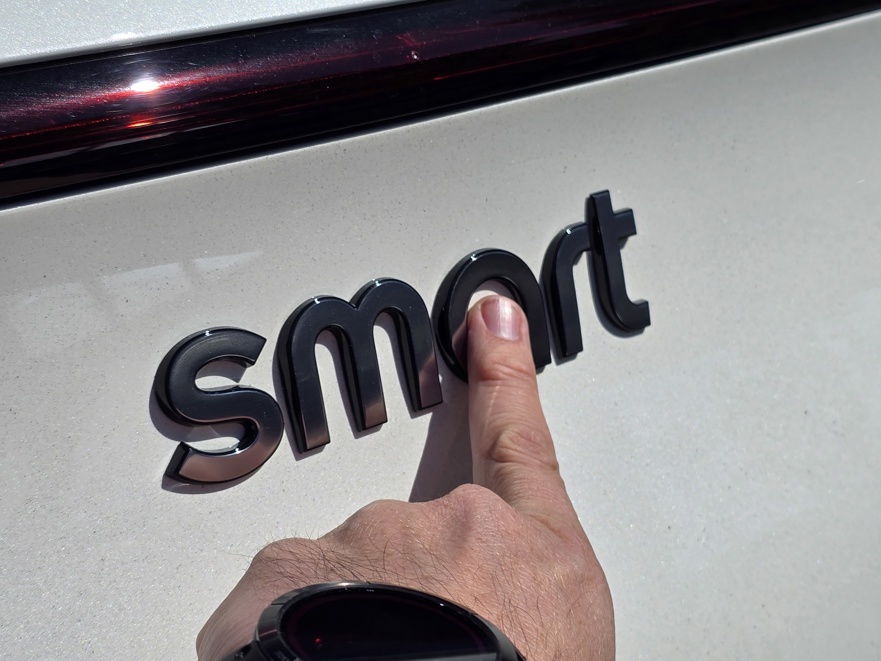
How much is the Smart #3 Premium?
The Premium sits in the middle of the #3 line up at $74,990, above the $69,990 Pro+ and $10k less than the range-topping $84,990 Brabus monster that adds an extra motor and ferocious performance.
What are the key statistics for the Smart #3 Premium?
All models of #3 (and #1 for that matter) use the same 66kWh battery, with the Pro+ and Premium using a single 200kW/343Nm electric motor on the rear axle.
Is the Smart #3 Premium efficient?
Smart claims a WLTP range of 455km and energy consumption of 16.3kWh/100km for the Premium, making it the most efficient model in the #3 range, bettering both the Pro+ (435km/16.8kWh/100km) and the Brabus (415km/17.6kWh/100km).
Is the Smart #3 Premium good to drive?
It is fantastic to drive. The power delivery is lively but considered, with good punch when you need it, but it never overwhelms the car around town, while excellent ride quality and sharp RWD-biased handling make it a delight on the open road as well.
Is the Smart #3 Premium practical?
Surprisingly, the swoopy coupe-styled #3 is actually almost more practical than the more traditionally upright #1, with a larger boot and rear headroom that isn't actually compromised by the lower roofline. There is plenty of storage around the cabin as well.
What do we like about the Smart #3 Premium?
It's fantastic to drive and superbly easy to live with. The interior and build quality is impressively high, while it is very comfortable and is actually fun to throw down a winding back road. Oh, and it looks great too.
What don’t we like about the Smart #3 Premium?
The lack of a blind for the panoramic sunroof is an annoyance, particularly as the glass isn't particularly tinted, meaning a lot of light beats down on you.
What kind of person would the Smart #3 Premium suit?
Anyone who wants a premium small hatch or SUV, but also wants a bit out of the mainstream with some sharp styling and serious personality. Also, someone who is considering a Mercedes-Benz EQA - this is much better...













